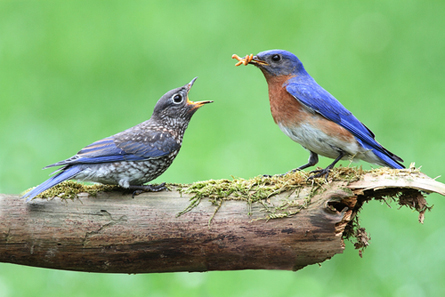ALBUQUERQUE — Baby bluebirds don’t survive as well near rumbling traffic and other human din as they do amid natural lullabies.

In a Virginia study, 35 percent more chicks died in the noisiest nests than in the most remote ones. Researchers found that chicks didn’t adjust for the noise by begging louder or at different frequencies. So parents may not have gotten the right cues for nestling care, behavioral ecologist John Swaddle suggested June 12 at the annual meeting of the Animal Behavior Society.
Until recently, most research on how human-made noise discombobulates birds has focused on how adults adjust their songs (or don’t) or on what species will nest at all among the din. Research is now turning to how noise might directly affect the success of a species. One earlier study on reproductive success, in common European birds called great tits, found smaller clutches near roaring highways.
Clutch size didn’t shrink among eastern bluebirds (Sialia sialis), said Swaddle, a professor at the College of William and Mary in Williamsburg, Va. Birds settling in to the 43 nest boxes he and his colleagues monitored for two years all started with about the same number of eggs.
Just what made noisier nests less successful after hatching isn’t clear, but Swaddle suspects that noise kept parents from caring for their nestlings properly. Noise might have made food harder to find, or it might have masked normal parent-chick chat. Even though baby birds have become an icon of endlessly demanding maws, parents do tune their feeding effort to begging calls, and research has confirmed the importance of communication.
Microphones set up 15 meters from nest boxes revealed that local human clamor could mask part of the nestlings’ peeps. Adult birds often perch at a similar distance from their nests when checking out the local situation.
In theory, baby birds might have adjusted their cheeping to compensate for the noise. In nest boxes with real noises, though, the young bluebirds either couldn’t or just didn’t accommodate.
“Whatever the reason, it’s clear they’re not doing as well,” says Emilie Snell-Rood of the University of Minnesota Twin Cities campus. The 35 percent survival gap “is a really big number when factored into projections about a population’s future,” she said. She studies behavioral flexibility and points out that hopes for wildlife adapting to human menaces depend on having populations big and varied enough to make meaningful adaptations.





